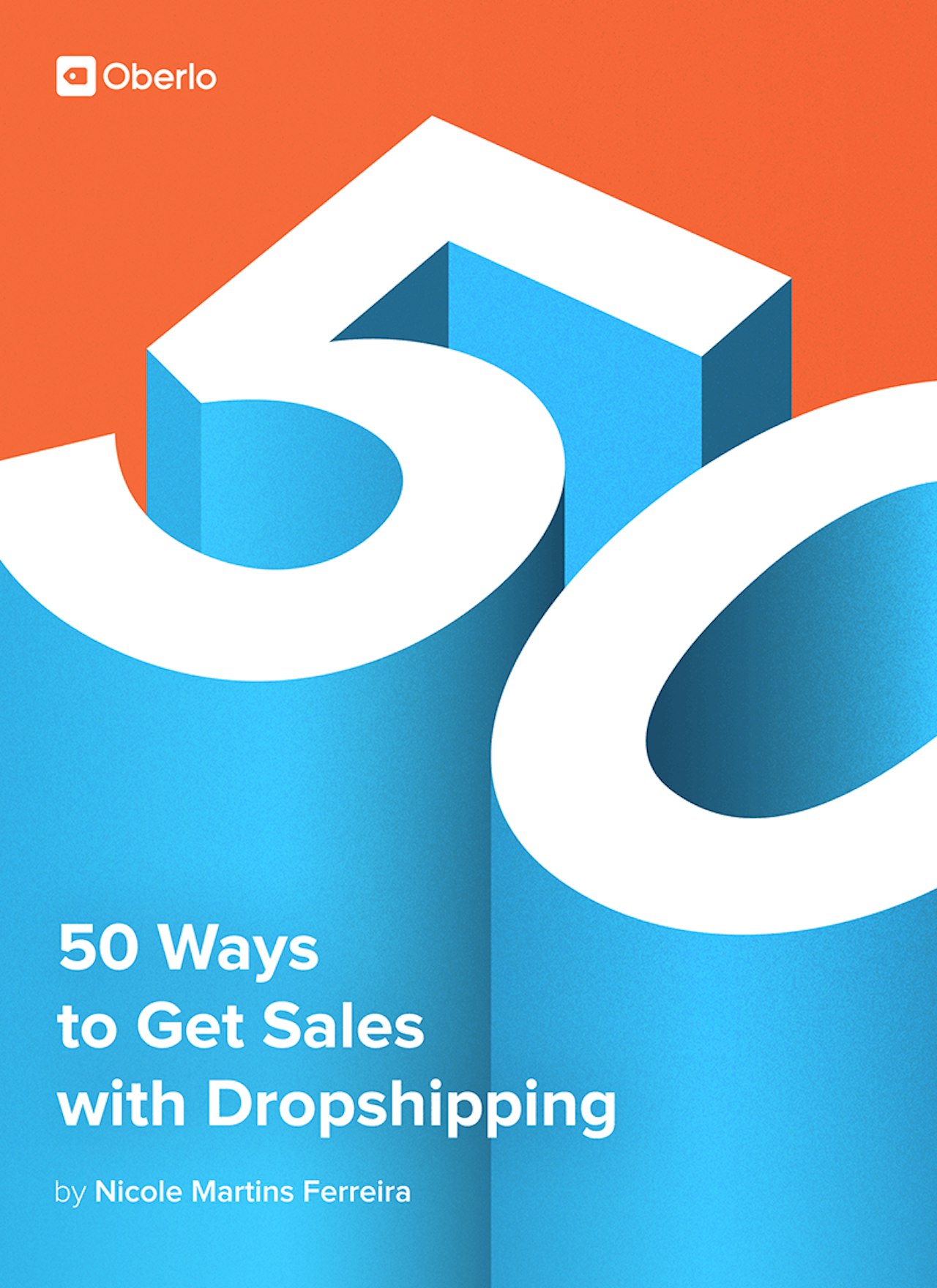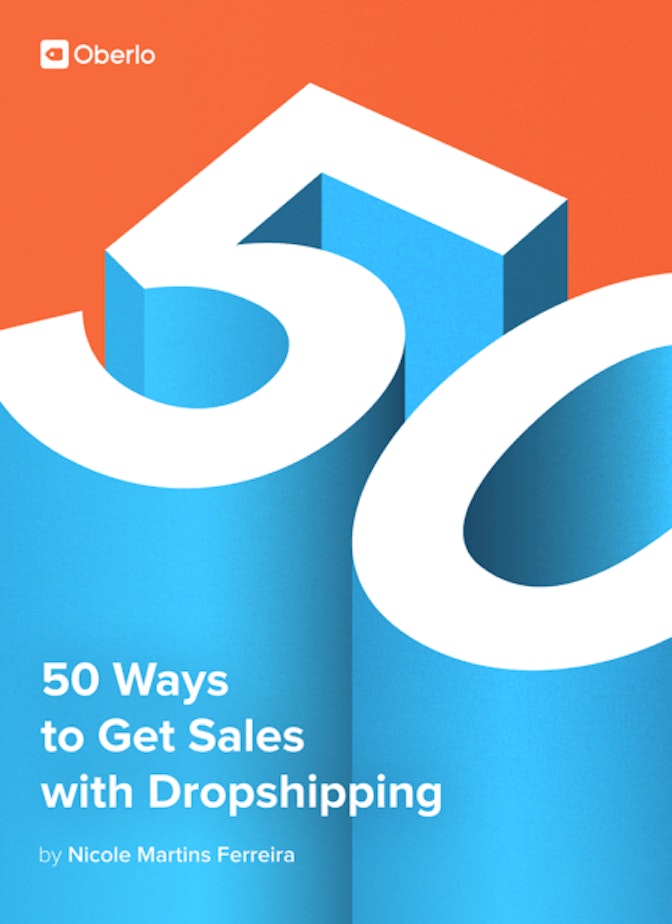An online store typically converts about 2% of its visitors. With retargeting, you could win back more of the 98%. Retargeting works because of a psychological principle known as ‘mere exposure effect’ which essentially means that the more a person is exposed to something, like your product or brand, the more comfortable they become with it. Thus, making it more likely that they’ll buy the product or from your brand. Using Facebook or Google ads, you can add a cookie or a piece of code to your online store.
This piece of code allows you to remarket to customers on Facebook if you add a Facebook pixel or on websites that use Google ads if you run Google ad campaigns. When a customer visits your website but doesn’t make a purchase, your ads will show up online provided that you pay for retargeting ads. Retargeting ads are highly effective performing 10x higher than display ads because they’re highly personalized.
Retargeting Example: The Bay runs retargeting ads on Google. When a customer adds a product to their cart, they’ll retarget them on various websites monetizing with Adsense. They’ll even show other relevant products from the same collection to help encourage the purchase. If an item is on sale, they’ll mention that the price has been lowered in the retargeting ad to win the sale.



Remarketing and Retargeting Tips:
Multi-product carousel ads can be very effective in a retargeting strategy. If a customer previously visited your store, you can show them the products they left in their cart. By showing them several products they already recognize, you’ll be more likely to attract customers with the product they’re most interested in.
Segment your audiences in the ad. This will vary depending on whether you advertise on Facebook or Google. For example, a person who read your blog post but didn’t land on a product page has a different experience than a person who visited your product page. When a person visits a product page and adds the item to their cart but doesn’t complete checkout, you can retarget them showing the product they added to their cart. As they liked the item enough to add it to their cart, they’re more likely to purchase that specific product if retargeted.
→ Click Here to Launch Your Online Business with Shopify
You’ll want to limit overexposure on your ads. Nancy at Shoelace recommends, “I would suggest splitting up your audience by time frame to takes your visitors through a sequence of retargeting ad experiences after they leave your website. This gives your visitors engaging content to interact with and give another outlet to tell your brand story.” Retargeter recommends showing about 17-20 ads per user per month.
When starting out, focus on retargeting add to carts first. Those who’ve added items to their cart are more likely to buy from you than those who didn’t even view a product. Since visitors don’t usually convert on the first visit, you’ll have a better chance of converting them the second time around.
Consider retargeting your blog traffic. If you’ve built up your blog around your niche, you’ll start to get free traffic from search and social media. While the user may be more interested in the blog content instead of browsing your store, if the lead is qualified they could become a customer. When retargeting them, show them your best selling product. When I tried this on my online store, I had a 9x ROI. See the blogging section in this ebook to know how I drove traffic to the page when my store was only 2 days old.
Give them a reason to buy the second time around. You could offer a discount code if you think they abandoned cart because of the product cost. Offering free shipping if the shipping rates for your store are high may help win back the customer. However, if you offer these type of deals add an element of urgency. For example, ‘Get 15% off. Offer expires within 24 hours.’
Retarget your store’s customers. You can upload your customers’ emails into Facebook and create a special retargeting list for those who’ve already purchased from your store. These ads work great for upselling products to your customer base, signing up for a loyalty program, or promoting your referral program. Since they’ve already purchased from you in the past, they’ll be more likely to buy from you again.
Add a burn pixel. A burn pixel stops showing a customer who ended up converting remarketing ads. Once a customer purchases from your store, you don’t want to keep retargeting them with the same ads, as it’ll waste your budget while lowering conversions.
Consider retargeting visitors for 180 days. You’ll want to show them different ads during this period until they convert. However, at least in my experience as a store owner, it’s the length that converts the best.
Remarketing Tools:
Retargeting on Autopilot by Shoelace is the most popular retargeting app on Shopify. They’re even one of Facebook’s Marketing Partners. If you’re struggling to create your own retargeting ads or want to outsource your retargeting ads, their experts are trained to deliver retargeting ads that convert. They can create ad sequences to better optimize your sales funnel to land the conversion. It even integrates with email marketing software by retargeting customers after an email is sent out. They’ve recently introduced product review ads that showcase your product reviews, a customer quote and your product to increase your conversions with social proof.
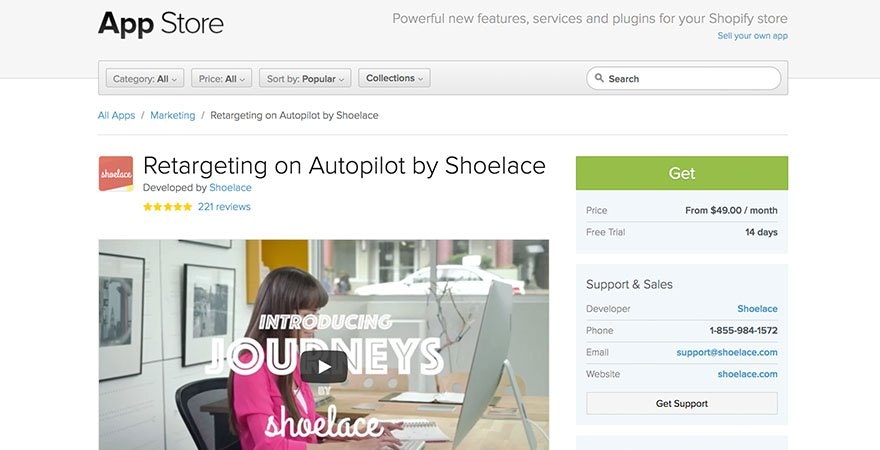
Kit can be used to automate retargeting campaigns. The app allows you to easily set up your Facebook campaigns and will run the ads for you on your behalf.
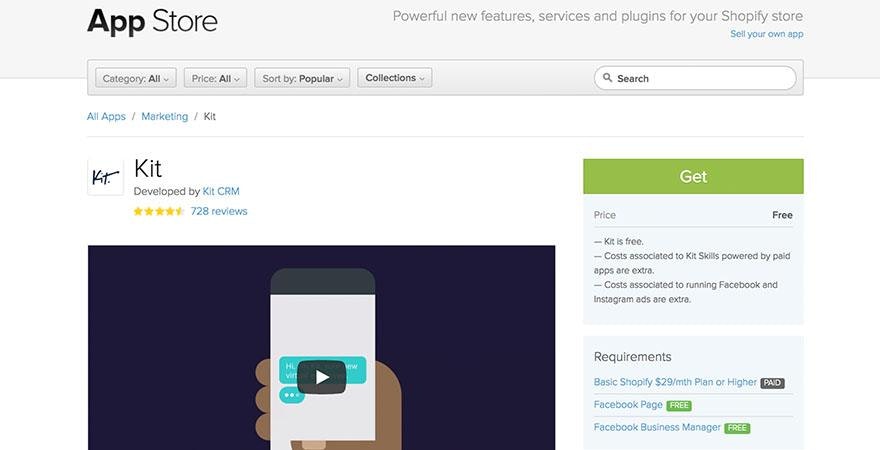
Facebook Messenger Remarketing adds a ‘Send to Messenger’ checkbox on your product pages so that you can retarget customers via Facebook Messenger. If the customer adds an item to their cart but doesn’t complete their purchase, they’ll be sent a message on Facebook Messenger. The messages are sent 30 minutes and 24 hours after cart abandonment.
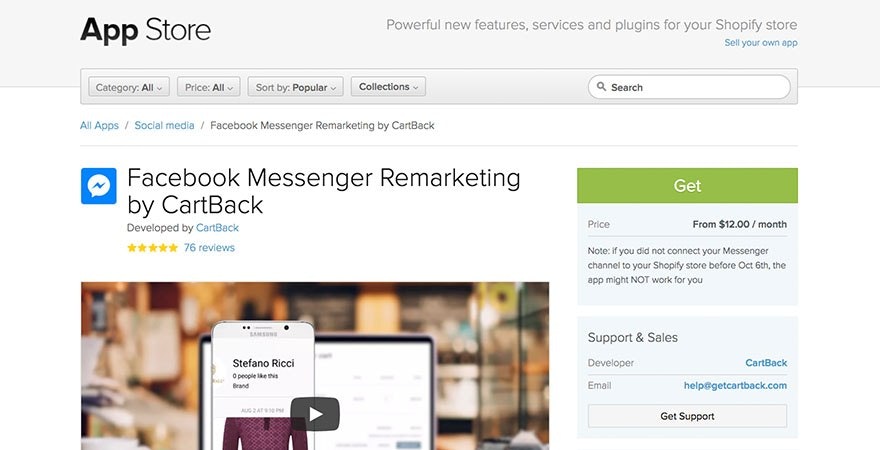
Web Browser Push Notifications by FirePush allows you to remarket to your registered customers with push notifications. You can send timely push notifications when a customer abandons their cart to help recover lost sales. You can even include a special discount to customers to recover the abandoned cart. When a customer abandons their cart, three push notifications are sent with the app.
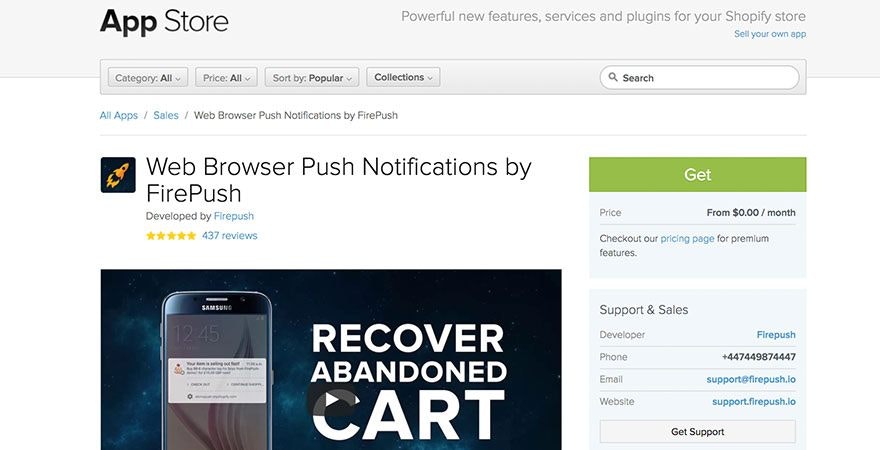
Remarketing Resources:
Case Study: How 100% Pure Spent $110k on Retargeting Ads with Shoelace to Make $1.8M in Sales looks at the effectiveness of retargeting visitors who ‘viewed a product.’ It mentions the funnel they used to generate nearly $2 million in sales. It also shows the difference in the type of content presented in the first couple of days and the end of the first week.
7 Retargeting Case Studies That’ll Boost Your Current Campaigns analyzes retargeting campaigns by Mazda, eBags, Bebe Store and more. Each section breaks down the key takeaways so you can apply the lessons to your own business.



Retargeting Influencers:


